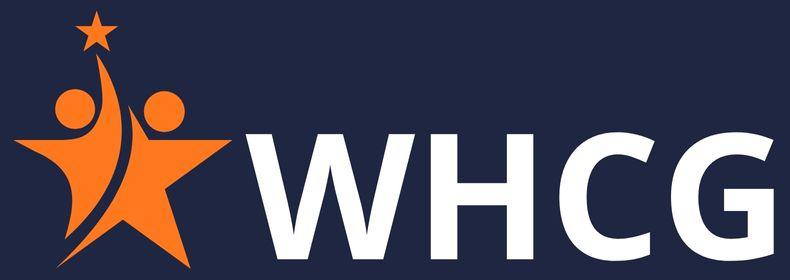I still remember the first time I decided to establish my online presence. I had this idea for a project, and I knew the first step was finding the perfect domain name. What I didn’t realize at the time was just how much that one choice could influence my brand, my visibility, and even the success of my website.
That’s when I started digging into the world of domain name validation. I wanted something that truly represented my goals and aligned with the message I was trying to share.
Understanding Domain Names
At first, I thought a domain name was just a simple web address people typed into their browsers. But I quickly learned it’s actually a huge part of your online identity. It can shape your branding, influence your SEO, and impact how easily people remember your website.
I realized the name I chose had to reflect my content and feel natural to anyone who landed on my site.
Choosing the Right Domain Name
This was the tough part. Selecting the right domain felt like a challenging task. Some names I liked were too complex, others felt unrelated to my content. I kept asking myself how my target audience might perceive the domain.
I finally understood the importance of relevance, simplicity, and memorability. If visitors felt confused or deterred, I’d lose them before they even got to know my brand.
Checking Domain Name Availability
I didn’t want to get my heart set on a name only to discover it was already registered. So, I started to check availability using different tools and strategies. To my surprise, finding the perfect domain was a little tricky—many names were already taken.
I learned to keep a few backup options ready. By entering the desired name into a registrar’s search tool, I could quickly see if my first choice was available. Sometimes, I had to settle for variations, but it was better than being stuck.
Using Domain Name Registrars
This was my next discovery: registrars. These companies like GoDaddy, Namecheap, and Google Domains made it easy to find, purchase, and manage my domains. They didn’t just facilitate the process—they also offered tools that guided me every step of the way.
Exploring Alternative Domain Extensions
Like most people, I first looked for a .com. But those go fast. That’s when I started exploring alternative domain extensions like .net, .org, .blog, and even .app. Sometimes, choosing one of these specific extensions was actually a smart strategy when my preferred option wasn’t available.
Researching Domain Name History
Before finalizing, I wanted to be sure the domain didn’t have a questionable past. Using tools like the Wayback Machine, I could review the history of a name. I discovered that a domain with spammy activity could harm my website reputation and negatively impact my work. Doing this bit of research was definitely advisable.
Domain Name Registration
Once I found my perfect domain, it was time to register it. I had to choose between one year or multiple years of ownership. I liked the idea of aligning the registration duration with my long-term plans, so I went with several periods instead of just one.
Evaluating Domain Name Value
During my search, I noticed that some names carried an intrinsic value. A short domain with strong keywords or an interesting length could cost more—especially if it had previous ownership. Learning how to evaluate a domain’s value was essential before making an informed investment.
Domain Name Ownership
When I finally became the owner, I realized it came with responsibility. I had to maintain my registration information and keep it up to date. I also enabled privacy protection services so my personal information wouldn’t appear in the public WHOIS database. It felt good to shield that data.
Protecting Your Domain Name
Owning a domain also meant protecting it. I set up strong passwords, enabled two-factor authentication, and made a habit of regularly monitoring my security. I wanted to stay safe from cyberattacks, theft, or any unauthorized access. In today’s world, these threats are real.
Transferring Domain Names
At one point, I had to transfer a domain to a different registrar. The process involved unlocking it, requesting an authorization code, and carefully following the guidelines provided. In some cases, this can also mean moving ownership to another person.
Renewing Domain Names
I quickly learned that domains are typically registered for a specific period, and if you don’t renew, they expire. To prevent losing mine, I enabled auto-renewal options offered by my registrar. It was a small step for peace of mind and convenience.
Common Domain Name Issues
Along the way, I discovered common issues that people face: copyright concerns, domain name disputes, and even the implications of letting a domain expire. Having this awareness helped me navigate ownership more successfully and avoid unnecessary headaches.
Conclusion
Looking back, I realize that selecting the right domain name is a fundamental step to establishing your online presence. When it’s memorable, it can resonate with your target audience and reflect your brand.
By understanding availability, registration, and ongoing maintenance, you can effectively manage your online identity and feel confident in your choice.
Frequently Asked Questions
What is a domain name?
A domain name is a web address that users type into their browsers to access a website.
How do I check the availability of a domain name?
Use a registrar’s search tool to check availability of the name you want.
What should I consider when choosing a domain name?
Think about relevance, simplicity, and memorability before making a choice.
How can I protect my domain name from cyberattacks?
Set up strong passwords, enable two-factor authentication, and stay alert to cyberattacks.
What if my preferred domain name is already taken?
Consider variations or explore alternative domain extensions like .net, .org, or .blog.
